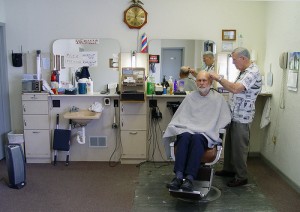Barber Shops, Nail Salons: Watch Out for the Gender Fines
 Some people need to find something better to do with their time. Then, they wouldn’t be busy slapping absolutely ridiculous fines on hardworking New Yorkers. 138 businesses so far this year have been slapped with preposterous fines, accusing them of gender-pricing discrimination.
Some people need to find something better to do with their time. Then, they wouldn’t be busy slapping absolutely ridiculous fines on hardworking New Yorkers. 138 businesses so far this year have been slapped with preposterous fines, accusing them of gender-pricing discrimination.
What the city’s Department of Consumer Affairs is failing to take into consideration is that these establishments are primarily hair salons and nail salons — locations that inherently differentiate in their services between the sexes. As Ania Siemieniaka, the owner of Freckle Skin and Hair, pointed out, “It’s ridiculous. I have some guys who need to come in every two weeks. If I raise my prices, I’ll lose all my male customers.”
Trying to explain the department’s actions, department commissioner Jonathan Mintz said,
“We wanted to really send a strong message to businesses about this kind of illegal pricing, so we did a very focused sweep over the course of the year. That sweep was largely targeted at salons and barbershops and laundry and dry cleaning.”
Belittling what it means to locations like barber shops, Mr. Mintz continued, “This is a very basic consumer-protection law and it is also a very basic civil-rights law. I think there are completely legitimate reasons to charge different prices for different services and that one should be specific for what those reasons are. Reasons are not chromosomes.”
Interestingly enough, along with salons, which have understandably received the most violations this year, laundry and dry-cleaning services have also been at the brunt of the violations.
The law actually went into effect in 1998, but has only recently been enforced in large measure. Hair and nail salon owners argue that there are major gender differences in the amount of time that certain services require, and in the amount of product necessary to be used. Waxing a man’s back, for instance, is more labor-intensive and produce-intensive than is waxing a woman’s back; cutting a woman’s hair is typically more labor-intensive than is cutting a man’s.
But the Department of Consumer Affairs isn’t listening.
